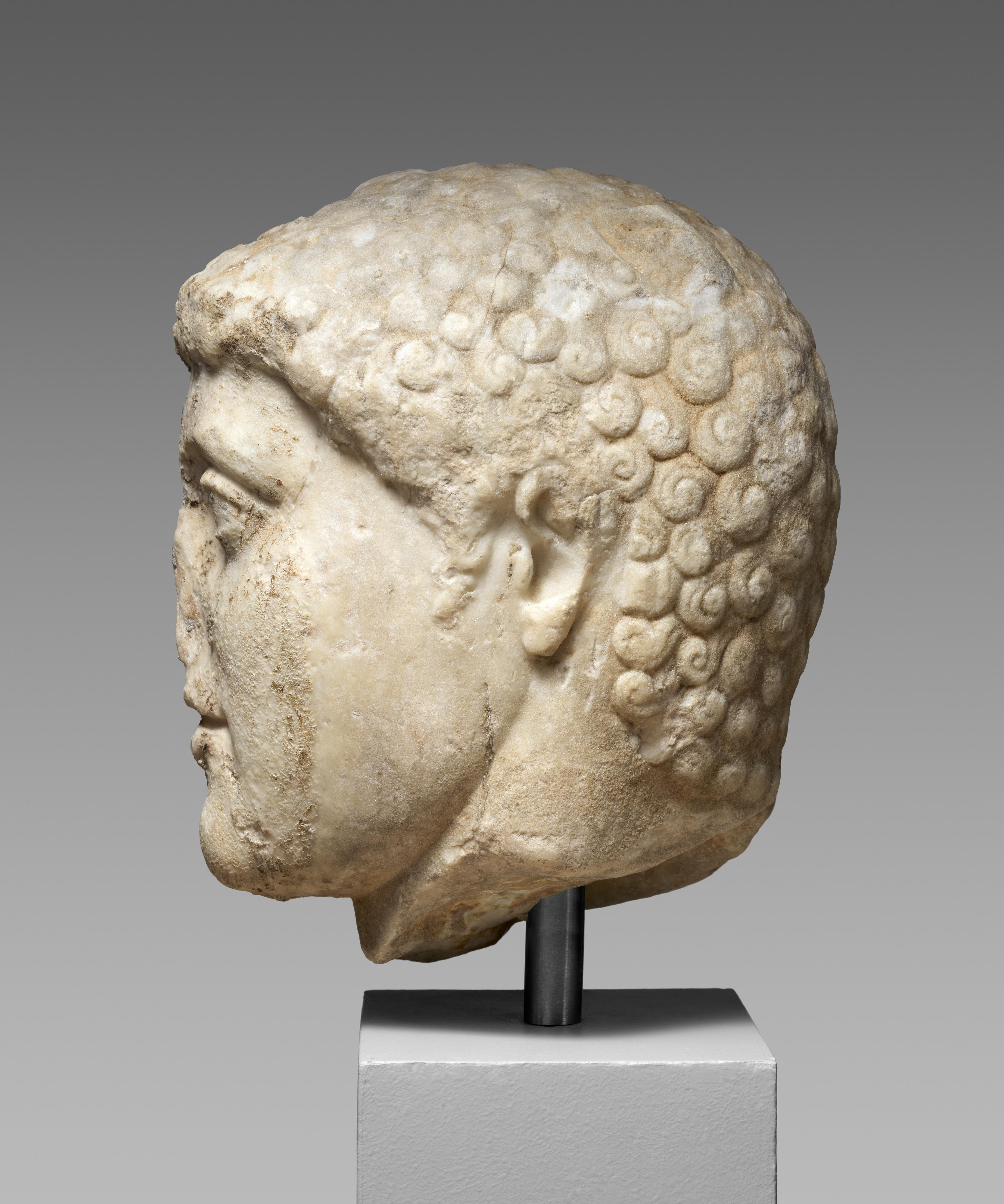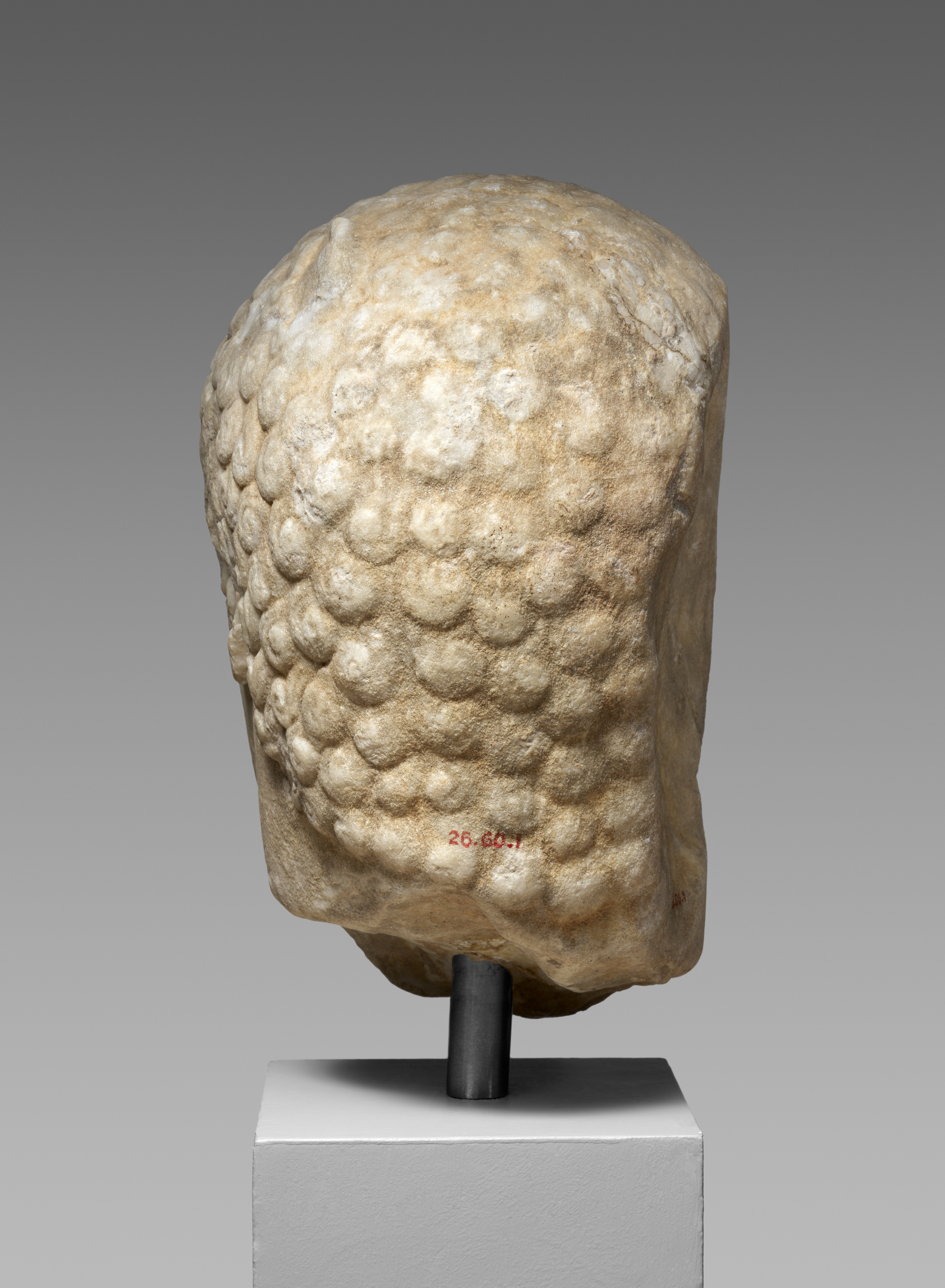Marble head from a statue of Harmodios
Original attributed to Kritios and Nesiotes
Copy of a Greek bronze statue from the Tyrannicide group, erected in 477/476 B.C. and attributed to Kritios and Nesiotes
Soon after the advent of a democratic government in 510 B.C., Harmodios and Aristogeiton, the Athenian aristocrats who assassinated one of the sons of the tyrant Peisistratos, were commemorated with a pair of statues in the Agora at Athens. The Persians removed the statues during their sack of Athens in 480 B.C., and two new ones were erected in 477/476 B.C. For one hundred years these heroized figures were the only statues of Athenian citizens allowed in the agora and, throughout antiquity, they remained among the most famous statues in Greece. The young Harmodios was represented raising his sword over his head, ready to deliver a slashing downward stroke. The remnants of two struts that supported the right forearm are visible on the front and side of this Roman copy.
Due to rights restrictions, this image cannot be enlarged, viewed at full screen, or downloaded.
This artwork is meant to be viewed from right to left. Scroll left to view more.




